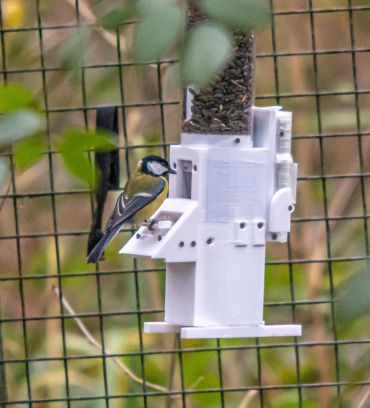Animal psychology: everything we know about chickadees' divorce before breeding

In a finding that deepens our understanding of animal social bonds, great tits have been shown to exhibit behaviors indicative of divorce before the breeding season.
The findings, published in Proceedings of the Royal Society B, provide valuable insights into how animals manage complex social decisions , according to the authors, scientists from the universities of Oxford and Leeds.
For monogamous birds that bond with only one partner at a time, mate choice has a crucial influence on reproductive success. Previous studies have examined why some monogamous birds remain with the same partner while others divorce before the next breeding season. However, what remained unclear was how their daily social bonds during the non-breeding season signaled future separation.
Finding early clues about divorce would be very difficult to explore for most bird populations. However, the new study leveraged data from the Wytham Woods Great Tit Project, one of the most extensively studied wild bird populations in the world, with over 75 years of experience. This allowed the researchers to generate robust quantitative data on social interactions between individual birds.

The behavior was recorded at feeders equipped with radio frequency identification. Photo: University of Oxford
Interestingly, the data showed that the first signs of divorce could be identified in winter , months before the birds bred with different partners the following spring. This suggests that winter socialization during the non-breeding season is indicative of what will be observed in the following mating period.
Winter behavior can predict spring divorce. Couples who subsequently separated spent much less time together during the winter than those who remained faithful.
Faithful couples strengthened their bonds over time, while divorced couples grew further apart, even visiting feeders at different times.
Divorcing birds rarely preferred to socialize with their breeding partner , unlike faithful birds, whose bond strengthened over time.
Lead researcher Adelaide Daisy Abraham, PhD candidate (Department of Biology, University of Oxford), said in a statement: "Our results demonstrate that relationships between birds are anything but static. We found a clear behavioral signal in the winter months that can predict a pair's likelihood of divorce by spring. Divorce appears to be a social process that develops over time."
Our results demonstrate that relationships between birds are anything but static. We found a clear behavioral signal in the winter months that can predict a pair's likelihood of divorce in the spring. Divorce appears to be a social process that develops over time.
To assess the birds' social associations, the researchers recorded their behavior around feeders equipped with advanced radio-frequency identification (RFID) technology . These feeders automatically detected tiny electronic tags worn by the study birds, recording their presence. This allowed the researchers to generate high-resolution datasets for each individual, mapping which birds they associated with at the feeders.
These data were compared with information on which birds had formed pairs during the previous and subsequent breeding seasons. The results clearly showed that faithful great tits visited feeders with their breeding partners significantly more frequently than divorced pairs.
By following the same birds over several years, the study links how relationships form, persist, and unravel across seasons. This offers exceptional insight into the life cycle of social relationships in a wild pair-forming animal and could inform future research with other species. Furthermore, by identifying the telltale signs of divorce, researchers can use this information to investigate the causes and consequences of divorce as it unfolds.
eltiempo




